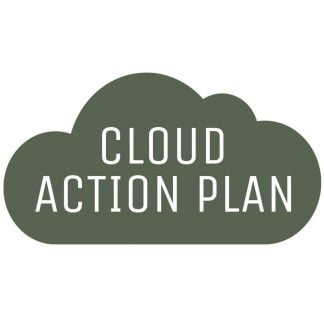Description
David is a supply manager. He keeps track of logistics and update the company’s inventory. He analyzes operational performance and resolve issues.
SIPOC
Suppliers:
- Vendors and suppliers
- Internal departments (Sales, Finance, Operations, etc.)
- Market research and analytics providers
- Regulatory and compliance authorities
Inputs:
- Purchase requisitions and orders
- Sales forecasts and demand data
- Budget and cost constraints
- Supplier performance data
- Industry standards and regulations
- Company policies and sustainability initiatives
Process:
- Develop procurement strategies and policies
- Manage supplier relationships and negotiations
- Monitor and analyze procurement performance
- Implement efficient purchasing processes
- Collaborate with internal teams to understand and meet procurement needs
- Manage procurement risks and develop contingency plans
- Support sustainability initiatives in procurement
Outputs:
- Purchased products and services
- Procurement performance reports and KPIs
- Supplier contracts and agreements
- Risk management and contingency plans
- Updated inventory and stock levels
- Cost savings and process improvements
Customers:
- Internal departments (Sales, Finance, Operations, etc.)
- End customers who purchase the company’s products
- Senior management and stakeholders
- Regulatory and compliance authorities
This SIPOC diagram helps to visualize the procurement manager’s role and the key components involved in managing the procurement process effectively.
KPI’s
Key Performance Indicators (KPIs) are measurable values that help evaluate the effectiveness of a procurement manager in achieving their objectives. Here are some common KPIs for a procurement manager:
- Cost Savings: The difference between the initial cost of a product or service and the negotiated cost, which demonstrates the procurement manager’s negotiation skills and ability to reduce expenses.
- Supplier Lead Time: The time it takes for suppliers to deliver products or services after an order has been placed. Shorter lead times indicate efficient supplier management and effective procurement processes.
- Order Cycle Time: The time it takes from the initiation of a purchase requisition to the delivery of the product or service. Reducing the order cycle time can improve the efficiency of the procurement process.
- Supplier Performance: Evaluates the quality, on-time delivery, and responsiveness of suppliers. High supplier performance ensures a reliable supply chain and minimizes disruptions.
- Procurement Return on Investment (ROI): The financial benefits obtained from the procurement activities divided by the total procurement costs. A higher ROI indicates a more effective procurement process.
- Inventory Turnover Ratio: The number of times the inventory is sold and replaced during a specific period. A higher inventory turnover ratio implies effective inventory management and demand forecasting.
- Percentage of On-time Deliveries: The proportion of deliveries that arrive on or before the agreed-upon delivery date. A higher percentage indicates better supplier management and fewer supply chain disruptions.
- Contract Compliance: The percentage of procurement activities that adhere to established contracts, policies, and regulations. High contract compliance ensures procurement processes are in line with legal and company requirements.
- Spend Under Management: The proportion of total company spend that is actively managed and monitored by the procurement department. A higher percentage indicates better control over company spending and cost-saving opportunities.
- Sustainability Score: The extent to which procurement activities align with the company’s sustainability initiatives, such as reducing waste, using eco-friendly materials, and supporting fair labor practices.
These KPIs help track the procurement manager’s performance and identify areas for improvement in the procurement process.
The role of data for a Procurement Manager
Data plays a crucial role in the procurement manager’s decision-making process and overall effectiveness. Here are some key roles of data for a procurement manager:
- Demand Forecasting: Data on historical sales, market trends, and seasonality helps procurement managers anticipate future demand, allowing them to adjust purchasing strategies and inventory levels accordingly.
- Supplier Evaluation and Selection: Procurement managers can use data on suppliers’ past performance, delivery times, and product quality to identify reliable and cost-effective vendors.
- Cost Analysis and Optimization: Analyzing cost data, such as prices, discounts, and shipping costs, enables procurement managers to negotiate better deals and identify opportunities for cost reduction.
- Inventory Management: Data on inventory levels, turnover rates, and lead times helps procurement managers optimize stock levels, minimize stockouts, and reduce carrying costs.
- Performance Measurement: Data-driven Key Performance Indicators (KPIs) enable procurement managers to assess their performance and identify areas for improvement.
- Risk Management: Analyzing data on supplier performance, market trends, and geopolitical factors allows procurement managers to identify potential risks and develop contingency plans.
- Compliance Monitoring: Data on regulatory requirements, contract terms, and company policies helps procurement managers ensure that procurement activities adhere to legal and organizational standards.
- Process Improvement: Data on procurement processes, such as order cycle time and on-time delivery rates, can reveal inefficiencies and guide process improvements.
- Sustainability Initiatives: Data on suppliers’ environmental and social practices can help procurement managers align purchasing decisions with the company’s sustainability goals.
- Collaboration and Communication: Sharing data with internal departments and suppliers can improve communication, foster collaboration, and ensure that procurement decisions align with the organization’s broader objectives.
In summary, data enables procurement managers to make informed decisions, optimize processes, reduce costs, manage risks, and support strategic initiatives. Leveraging data effectively can significantly enhance a procurement manager’s overall performance and contribute to the organization’s success.




